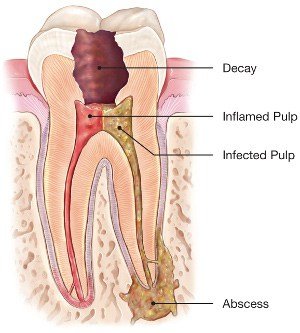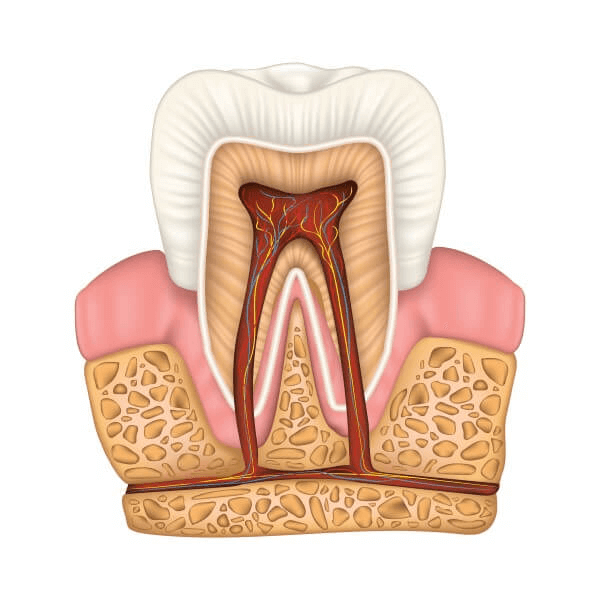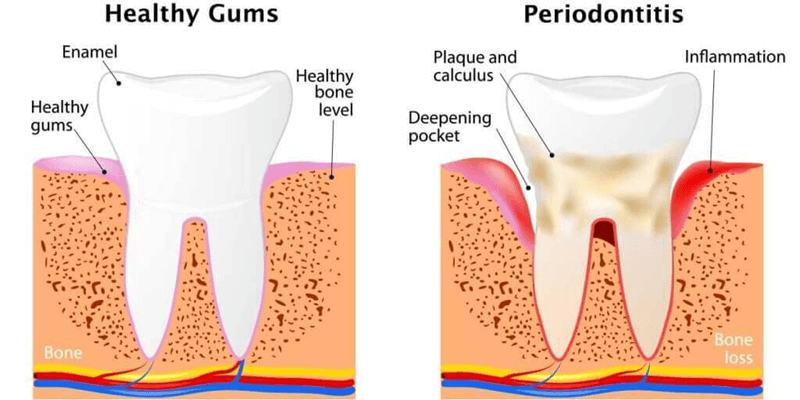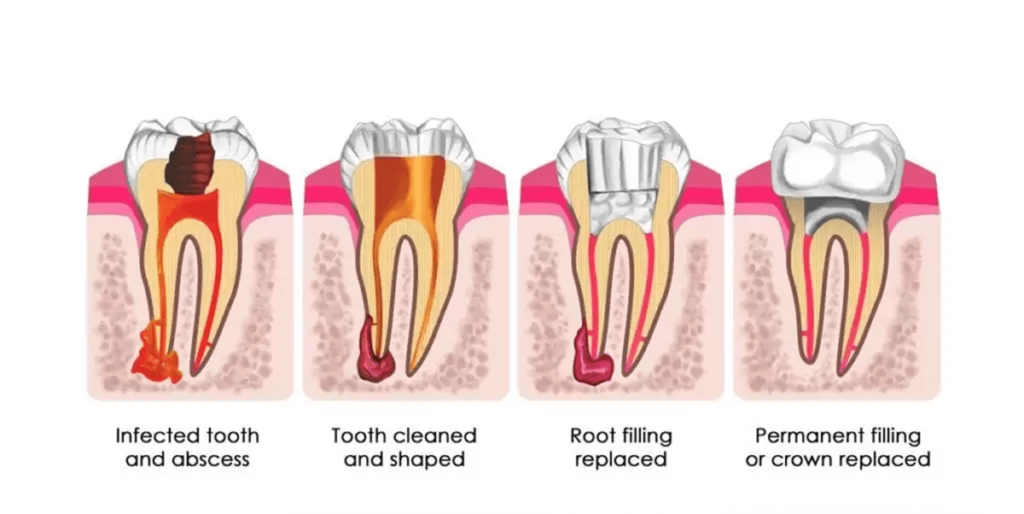In the hustle of everyday life, we tend to avoid or wait until health conditions worsen. With dental issues especially, we wait until the initial discomfort turns into a severe toothache. Which results in inflamed gums, decay of tooth vessels, and bleeding through gums.
However, to heal your teeth from increased bacterial infection, it is important to recognize early signs and get your Dental Treatments done timely.
For example, suppose you are experiencing symptoms like sensitivity to heat or cold, spots on the gums, persistent toothache, or pain when chewing or biting. In that case, chances are high you have caught bacterial infection. Similarly, you should consider various other signs and seek medical attention. Learn more about dental endodontic root canal treatment below.

What is Endodontic Treatment: In Glance
Dental endodontic treatment preserves a tooth that is infected with an abscess. This dental condition damages the tooth pulp and makes the affected area inflamed, causing pain and discomfort. This inflammation can arise from deep decay, trauma, and cracked teeth.
Before starting with the procedure of root canal, dentists conduct an electric pulp test (EPT) to analyze whether the pulp is reacting to sensations. Then the infected pulp is removed, and the vessels are cleaned and sealed with anti-bacterial material to prevent further damage. The best aspect of dental endodontic treatment, it saves you from tooth extraction.
Know When You Require Dental Endodontic Treatment
To maintain oral health, following the right measures and being prepared beforehand is all you need!
To help you with this, we’ve highlighted the 9 early signs of a root canal to assess when you require immediate dental endodontic root canal treatment.
1.1 Consistent Toothache
Usually, the very first sign of having a root canal or abscess is experiencing a toothache that may cause consistent discomfort or painful episodes of toothache in between.

1.2 Tender Or Swollen Gums
Another sign of root canal or abscess is swollen or sensitive gums. A swollen area around the teeth with or without fluid is a clear sign of a bacterial infection. In some cases, a small bump, known as a dental abscess, can cause extreme discomfort and indicate a requirement for dental endodontic treatment.

1.3 Extreme Sensitivity To Cold Or Warm Intake
In case you are facing pain or discomfort after consuming cold or hot food supplements or liquid, there are chances you have been caught with a bacterial infection. Such discomfort persists even after the temperature of your mouth changes.
1.4 Darkened Teeth
Having discolored or darker areas towards the sides or top of your teeth may be caused due to nerve and pulp decay. It also indicates that you need dental endodontic treatment.
1.5 Discomfort While Chewing Or Biting
If you experience pain or discomfort while chewing or even after applying mere pressure on your teeth often indicates your teeth structure is infected or damaged. It is also a clear sign that your tooth pulp is extremely infected or inflamed.
1.6. Inflamed Boils Or Pimples
When the nerves of your teeth are damaged, you may experience inflamed pimples or boils on your gums. These infected pimples usually release pus, which is again a significant sign of underlying infection.
1.7 Cracked Tooth
Having a cracked tooth exposes the pulp of your tooth to multiple bacteria that can damage your tooth, and cause inflammation, redness, and pimples or boils. Thus, it becomes essential for you to monitor your oral health and seek medical help for any sudden pain or sensitivity.
1.8 Soften Or Loose Tooth
Another sign that shows you need a dental endodontic treatment is soft nerves or loosened-up teeth. Most of the time such a dental condition is caused due to infected pulp present in your tooth.
1.9 Persistent Bad Breath Or Blood Secretion
Having sensitive teeth filled with plague mostly exhibits foul smell, and bad bread and causes your gums to bleed. This condition is mostly caused due to bacterial buildup and lack of proper oral hygiene. Also, if you sense sharp pain or extreme sensations after eating cold or hot food supplements, it again highlights that you have sensitive teeth or gums.
Dental Endodontic Treatment Procedure
This section covers the dental endodontic treatment steps that a skilled endodontist carries out for tooth preservation. Read below!
Step 1. Initial Assessment: The dentist will perform an electrical pulp test (EPT) to deeply analyze how severe is the damaged tooth.
Step 2. Removal of Infected Pulp: After the initial tests, the dentist will remove the pulp-infected bacterial infection that has accumulated under your tooth vessels
Step 3. Numb the Damaged Tooth using Anesthesia: Then, the expert will use anesthesia in the damaged tooth or nearby regions. It makes the whole dental endodontic treatment pain-free for you.
Step 4. Disinfection of Tooth: Then he/she will disinfect the numbed tooth with sodium hypochlorite.
Step 5. Filling Root Canals: Once the root canals are prepared, the vessels are then filled with a biocompatible material.
Step 6. Securing Treated Tooth: The access hole is then sealed with a temporary or permanent filling, depending on the condition.
Step 6. Assessment for Final Restoration (Crowning): After your treatment, the dentist will assess whether you need a custom-made crown or a cap for the final restoration.
Step 7. Follow-up Appointment: In the final step, follow-up appointments are required to monitor tooth healing.

Modern equipment and techniques of treatment make the entire process relatively less painful. These endodontic treatments and procedures prevent tooth damage, deliver lasting results, and safeguard the teeth from other risks.
What Happens After Dental Endodontic Treatment?
Post-dental endodontic treatment, you should rest and stabilize yourself. Most probably after an hour or so, the effect of local anesthesia will wear off, you will regain sensation in your mouth.
Generally, stages of endodontic treatment include two more follow-up appointments for the final root canal restoration. A dentist will add a dental crown on top of the treated tooth. It prevents the occurrence of infection or breakage again.
- A nominal discomfort is natural to occur after your treatment. It will not last long.
- Although medications aren’t required after your treatment, you should consult your dentist if required.
Weighing Benefits & Risks Of Dental Endodontic Treatment
Making informed decisions is always the best choice! For you, we have enlisted the potential risks and benefits of dental endodontic treatment with a brief explanation for better understanding.
Benefits:
- A well-performed root canal therapy protects your natural tooth.
- Dental endodontic treatment effectively eliminates the pain caused by inflamed pulp
- Through root canal treatment, you regain your normal functions like biting and speaking abilities.
- The process involves treatment, medication, and tooth restoration to reduce the risk of re-infection in the coming years.
Potential Risks:
- Unhygienic post-dental endodontic treatment care can expose your tooth to various other bacteria and reinfection.
- Sometimes dental endodontic treatment weakens the tooth and increases the risk of causing a fracture.
- The remaining residual infection in your mouth can cause pain after endodontic treatment and lead to reformation of abscess or bone loss, when not treated timely.
Dental Endodontic Treatment FAQs
This section addresses some common queries asked about the treatment. Keep reading further!
Q1. Is the procedure of a root canal painful?
The dental endodontic treatment involves the use of anesthesia. It means no pain because it numbs the injected area.
Q2. Is root canal treatment a time-consuming procedure?
Dental endodontic root canal treatment requires 1-2 hours of sitting, depending upon the complexity involved. Sometimes multiple sittings are required for full restoration of the tooth.
Q3. Is it possible that my treated truth can become infected again?
This condition can only occur if your crown is damaged or you lack proper oral hygiene.
Q4. What usually causes a root canal or abscess?
A cracked tooth and tooth decay allow the bacteria to enter the tooth’s vessel, infect the pulp, and cause inflammation & infection.
Dental Endodontic Treatment Summary
Addressing the early signs of oral bacterial infection can save your tooth from extraction and from getting severely damaged. With advancements in modern techniques and tools, brands like Aidite have revolutionized dentistry and dental endodontic treatments.
Aidite is a renowned provider of dental solutions that specializes in zirconia materials like 3D Pro, Zir, Aizir, and Superfecta Zir, offering a range of aesthetics. Read more to learn about various other durable, high-quality dental restoration solutions provided by Aidite.
Towards the end, we would like to mention that it’s always a smart decision to attend regular dental checkups in order to maintain oral health. In case you notice any of the symptom (s) seek dental endodontic treatment immediately.



